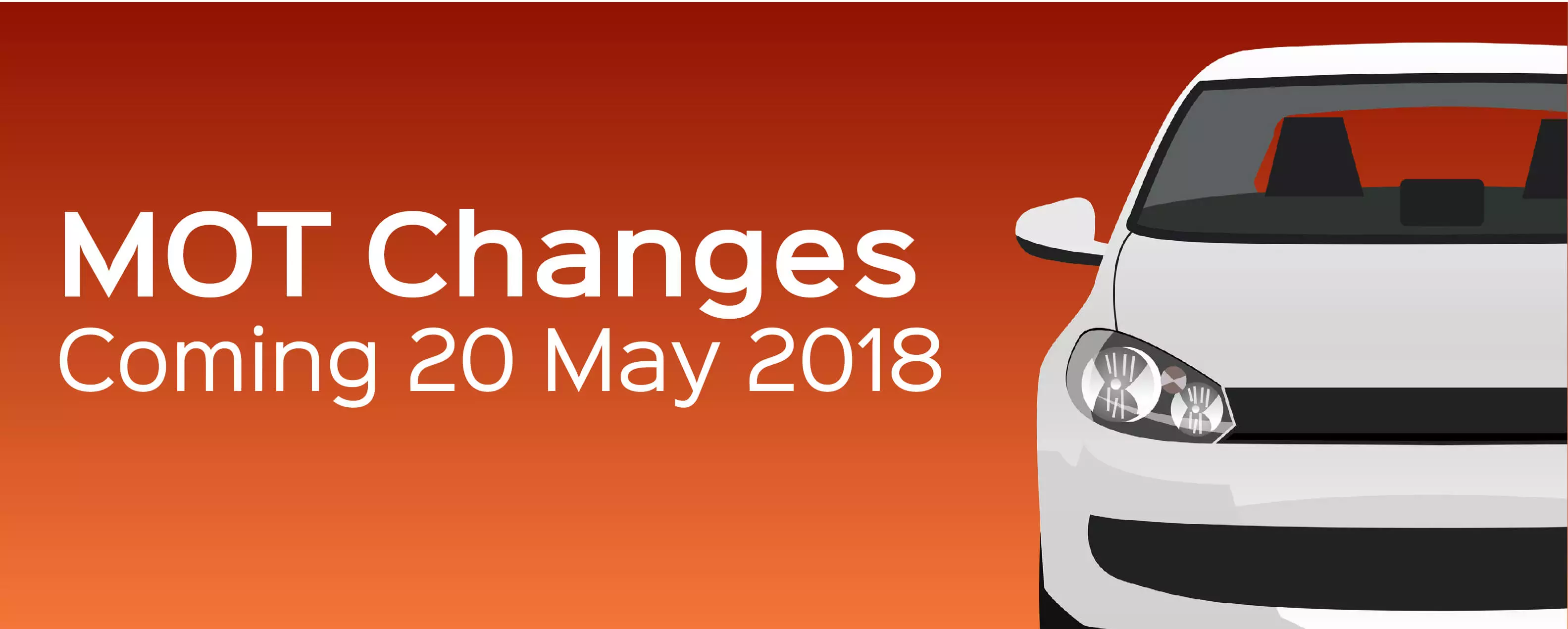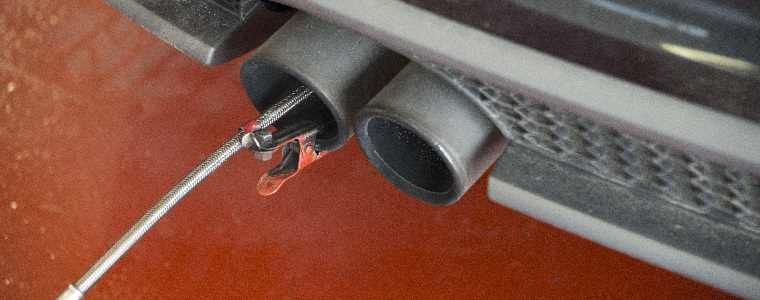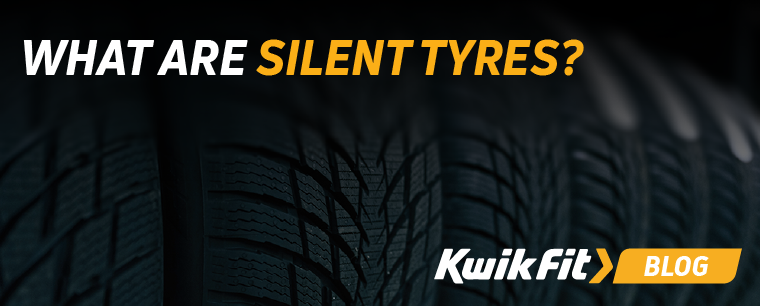Changes To The MOT In May 2018 & What You Can Do In Advance
Kwik Fit | Sunday 13th May 2018 3:31pm

Major changes to the MOT test will come into force on 20th May this year regarding the way faults and problems are classified when a vehicle is tested. From this date, all vehicle faults will be recorded as either Minor, Major, or Dangerous. All Class 3, 4, 5, and 7 vehicles will be tested against the new criteria; this includes all cars, motorhomes, buses, and goods vehicles up to 3,500kg.
At present, a vehicle can simply pass, fail, or receive an advisory on a specific item on the MOT test. So, how will the new MOT criteria for recording defects work? Here’s an explanation of the new categories plus some examples from the draft DVSA MOT check guidance.
Minor MOT faults
A ‘minor’ fault would be considered one where the problem does not cause an immediate safety risk but should be rectified soon. This is very similar to the existing system whereby an advisory is given to items that the driver should be aware of and may cause a future MOT failure if not addressed. An MOT certificate will still be issued if a vehicle only has minor faults.
Example:
All vehicles manufactured since 1971 must have a minimum of 2 brake lights (or stop lights) at the rear of the vehicle. If a vehicle has three brakes lights and one is not functioning, the vehicle will receive a Minor defect on the MOT check.
Major MOT faults
A ‘major’ fault is more serious, it poses a potential safety risk to drivers and others. It could also be a defect that has a damaging impact on the environment. These faults will result in an MOT failure and the owner will not be issued with an MOT pass certificate until the issues have been rectified.
Example:
Using the same vehicle as an example, if two of the three brake lights are inoperative (specifically, more than ½), the vehicle will receive a Major defect on the MOT.
Dangerous MOT faults
Finally, a fault classed as ‘dangerous’ is one that poses an immediate risk to the safety of the driver and other road users. As such, if a vehicle has a dangerous fault then it should not be driven until the fault has been rectified. This will also result in an immediate MOT failure.
Example:
Let’s take our vehicle with a brake light problem once again. If all of the brake lights are missing, broken or inoperative, the vehicle will receive a Dangerous defect on the MOT check since other road users will have no way of telling if the vehicle is braking or coming to a stop.
Will the MOT still include advisories?
Yes, minor faults will still be recorded in the same way and will appear as advisory items on the MOT test certificate. However, the DVSA have added that, when the new MOT is rolled out in May, the certificate will likely include explicit safety warnings for cars with serious faults and will highlight penalties for driving a dangerous vehicle.
Why is the MOT test changing?
The changes bring MOT testing in the UK in line with the new EU directive known as the European Union Roadworthiness Package which will use the same terminology for categorising faults. The terminology is also in keeping with existing wording for the Road Traffic Act which deems it is against the law to drive a vehicle that is in a ‘dangerous condition’.
More specifically, the Act states that “a person is guilty of an offence if he uses, or causes, or permits another to use a motor vehicle or trailer on a road when… the condition of the motor vehicle or trailer, or of its accessories or equipment… is such that the use of the motor vehicle or trailer involves a danger of injury to any person”.
So, in relation to MOT checks, a ‘Dangerous’ item on the test is one whereby the vehicle should not be driven away from the garage since driving a vehicle in a dangerous condition is a criminal offence.
What effect will the MOT changes have on drivers?
In terms of what constitutes a pass or fail, the new defect categories won’t have any real effect (unless you drive a diesel model - see below). An MOT test fail in a specific test area before the changes will still be a fail come 20th May, the main difference is that a failed component will now be classified as major or dangerous depending on its condition. In both cases, the fault should be fixed immediately in order to obtain a new MOT test certificate. If the fault is classed as Dangerous, the vehicle should not be driven at all until rectified. The new measures are intended to highlight to drivers the most urgent problems and the safety risks they pose.
Changes for diesel owners
As well as the change in MOT fault classification, the MOT test is set to be much stricter for owners of diesel vehicles. All petrol and diesel cars have to complete an emissions test in order to pass their MOT check. That is, the amount of dangerous pollutants that the vehicle produces and expels from the exhaust such as carbon monoxide is measured and should not surpass the limit set by the DVSA.
The limit for diesel vehicles will be lowered from 20th May, meaning the test is stricter and harder to pass for older vehicles where the exhaust system may not be as effective. In addition, vehicles fitted with a diesel particulate filter will be scrutinised more closely and if smoke of any colour is emitted, the vehicle will be issued a Major fault, and consequently an MOT fail.

This is the latest in a series of steps by the Government to discourage drivers from buying new or used diesel vehicles. In the Autumn budget, it was announced that anyone buying a new diesel car from April this year will face a tax hike and be charged as if the vehicle was in the next tax band for the first year. This could add anything from £15 to £500 on to your road tax bill in the first year. So, be mindful if you are planning to buy a new or used diesel vehicle in the near future - you may be hit hard in the pocket trying to keep it on the road.
MOT testing with Kwik Fit
Our experienced technicians across the country provide the local communities with quality MOT testing they can rely on.
Book in for an MOT test at your local Kwik Fit centre, or give us a call. Our teams are always happy to help with any queries and advise you on the particulars of your MOT results.
Any facts, figures and prices shown in our blog articles are correct at time of publication.
Featured Articles
How Much Fuel Does Air Conditioning Use?
Thursday 29th May 2025
Your car’s air con uses a surprising amount of fuel to keep you cool, especially if it’s low on refrigerant & working overtime. Find out the exact figures here.
How Long Does An MOT Take At Kwik Fit?
Friday 23rd May 2025
The yearly MOT test is dreaded by many drivers, but how long does the actual MOT test take, and what goes into it? Here’s what affects the length of your test.
What Are Silent Tyres?
Saturday 3rd May 2025
Looking for a more luxurious, peaceful drive? Silent tyres could be the answer with their clever technology. Discover how these tyres work in our latest blog.









